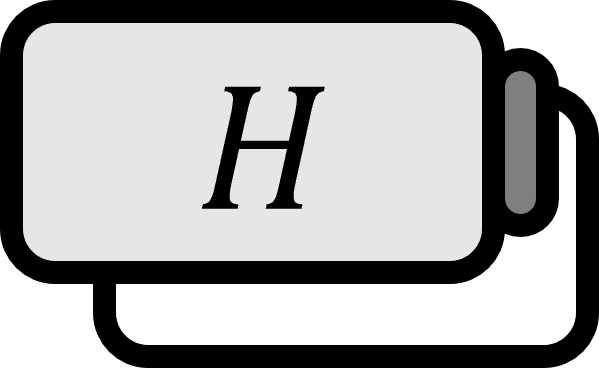Orthogonal Projection in Hilbert Spaces
Definition1
Let’s assume a closed subspace $V$ of a Hilbert space $H$ is given.
When $\mathbf{v} \in H$ is represented as $\mathbf{v} = \mathbf{v}_{1} + \mathbf{v}_{2}$ with respect to $\mathbf{v}_{1} \in V$ and $\mathbf{v}_{2} \in V^{\perp}$, a surjection $P :H \to V$ that satisfies the following is called an orthogonal projection.
$$ P \mathbf{v} = \mathbf{v}_{1} $$
Explanation
Orthogonal projection has the following properties:
- $P$ is linear, bounded, and $| P | = 1$.
- $P$ is a self-adjoint operator, i.e., $P^{ \ast } = P$.
- $P$ is idempotent, which means $P^{2} = P$.
Orthogonal projection extended to the Hilbert space naturally covers orthogonal projection in matrix algebra, and it feels a bit more abstract in its definition.
Theorem
Let’s assume a [normalized orthogonal basis] $\left\{ \mathbf{e}_{k} \right\}_{k \in \mathbb{N}}$ of the closed subspace $V$ of the Hilbert space $H$ is given. For every $\mathbf{v} \in H$, orthogonal projection $P : H \to V$ can be represented as follows.
$$ P \mathbf{v} = \sum_{k=1}^{\infty} \left\langle \mathbf{v} , \mathbf{e}_{k} \right\rangle \mathbf{e}_{k} $$
Proof
Since $\left\{ \mathbf{e}_{k} \right\}_{k=1}^{\infty}$ is a basis of $V$, $P \mathbf{v} \in V$ is represented as follows for $\left\{ a_{k} \right\}_{k=1}^{\infty} \subset \mathbb{C}$ not equal to $a_{1} = \cdots = 0$.
$$ P \mathbf{v} = \sum_{k =1}^{\infty} a_{k} \mathbf{e}_{k} $$
Because of the orthogonality of $\left\{ \mathbf{e}_{k} \right\}_{k=1}^{\infty}$, $\left\langle \mathbf{e}_{i} , \mathbf{e}_{i} \right\rangle = 1$ and therefore $\left\langle \mathbf{e}_{i} , \mathbf{e}_{j} \right\rangle = 0$ for $i \ne j$.
$$ \left\langle P \mathbf{v} ,P \mathbf{v} \right\rangle = \sum_{k =1}^{\infty} a_{k}^{2} $$
Meanwhile, due to the property $P^{ \ast }=P$ and $P^{2} = P$ from $P \mathbf{v} = \sum_{k =1}^{\infty} a_{k} \mathbf{e}_{k}$,
$$ \left\langle P \mathbf{v} ,P \mathbf{v} \right\rangle = \left\langle \mathbf{v} ,P^{ \ast }P \mathbf{v} \right\rangle = \left\langle \mathbf{v} ,P \mathbf{v} \right\rangle = \sum_{k =1}^{\infty} a_{k} \left\langle \mathbf{v} , \mathbf{e}_{k} \right\rangle $$
Hence
$$ \sum_{k =1}^{\infty} a_{k}^{2} = \sum_{k =1}^{\infty} a_{k} \left\langle \mathbf{v} , \mathbf{e}_{k} \right\rangle $$
In summary,
$$ \sum_{k =1}^{\infty} a_{k} \left( a_{k} - \left\langle \mathbf{v} , \mathbf{e}_{k} \right\rangle \right) = 0 $$
Therefore, for every $k \in \mathbb{N}$, $a_{k} = \left\langle \mathbf{v} , \mathbf{e}_{k} \right\rangle$ must hold.
$$ P \mathbf{v} = \sum_{k=1}^{\infty} \left\langle \mathbf{v} , \mathbf{e}_{k} \right\rangle \mathbf{e}_{k} \qquad , \mathbf{v} \in H $$
■
See Also
Ole Christensen, Functions, Spaces, and Expansions: Mathematical Tools in Physics and Engineering (2010), p74 ↩︎
